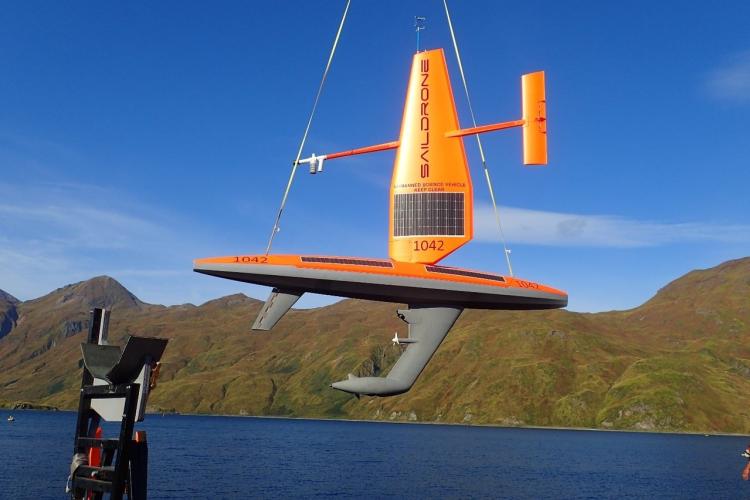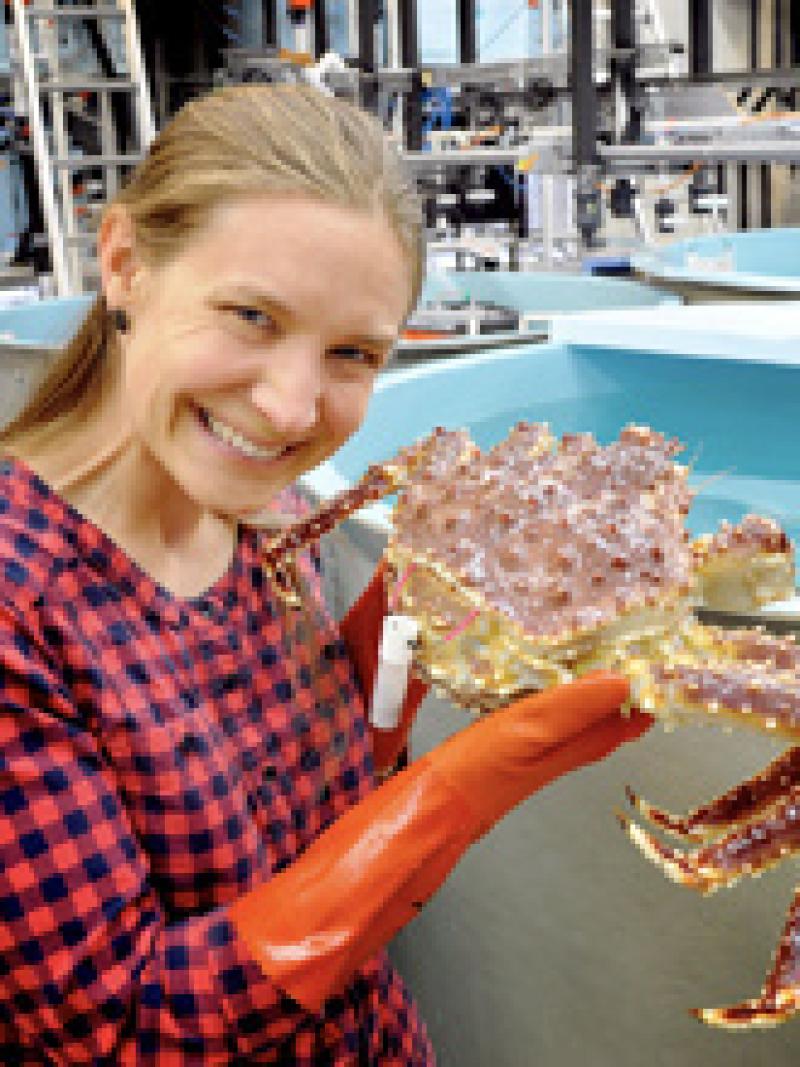Crab Ahoy!
Our search has been rewarded! The saildrones have been out in Bristol Bay for about two weeks, listening for the signals from crab tags. As the drones entered Bristol Bay, I began to dread that all we would hear was silence, but luckily it has turned out much better than my nightmares. Thus far we’ve re-found 40 of our tagged crabs! Since they were tagged in June, some of these crab have walked over 50 miles. It is interesting to see that although they traveled far, at least some of them stayed extremely close together. Almost makes you wonder if crabs have friends they like to hang out with!

Sunrise over Bristol Bay, captured by a camera on a saildrone.
When the drones are at sea we can still alter their course at any time. As we go along, I’ve been working with Saildrone personnel to fine-tune the drone tracks to increase our likelihood of finding tagged crab. In general, we are doing transects back and forth across Bristol Bay – just like you would when mowing the lawn. However, since we know crab like to group together, once we find one we start doing spirals around that crab to see if there are any more in the same area. For example, in the below image we found the crab in the center of the spiral first. After intensively searching the area around this first crab, we found four more close by (within a mile).

The crab movements we have observed so far are helping us understand how red king crab move from one season to next. The saildrones will be out searching for the rest of October. As for me, I’ll continue to sit in my office, obsessively refreshing my screen to see where the drones are and if any new crabs have been found.




